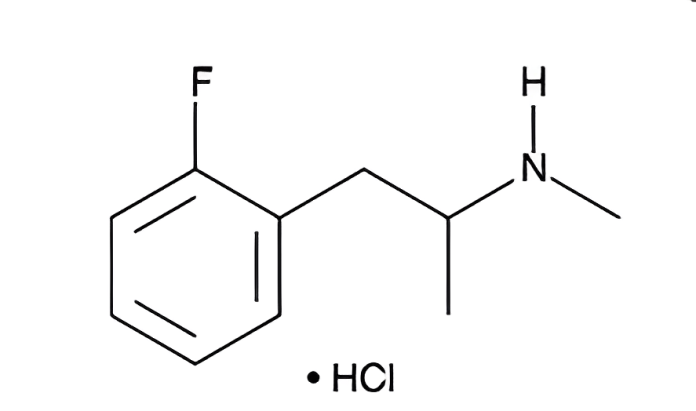Welcome to this detailed review of 2-FEA, a popular research chemical that has gained a great amount of attention in recent years. In this article, we’ll explain the history of 2-FEA, discuss various methods of administration, and explore user experiences and potential side effects. So, if you’re curious about this intriguing compound, read on for an informative overview.
General Information on 2-FEA
2-FEA, or 2-Fluoroethamphetamine, is a novel psychoactive substance (NPS) in the amphetamine class of compounds. As a refresher, the amphetamine drug class consists mostly of stimulants, empathogens, and some psychedelics. The 2-FEA research chemical acts as a releasing agent for monoamine neurotransmitters like dopamine, norepinephrine, and serotonin. As a result, those neurotransmitters undergo increased levels in the brain. This normally produces stimulating and euphoric effects, making it a favored choice for recreational use. As you continue reading this research chemical review, remember that 2-FEA remains a research chemical with limited information on its long-term effects and safety profile, so users must be very cautious.
History of 2-FEA
Next in our 2-FEA review, we’ll discuss this drug’s relatively short history. 2-FEA first showed up in the early 2010s as a designer drug. Since then, it’s become more and more popular among recreational users and psychonauts alike. At first, it was created as an analog of amphetamine, with a slight change in chemical composition. This modification was meant to enhance the compound’s potency and duration.
The compound gained traction in the online research chemical market. Basically, it was marketed on the legal drugs list as one of the options to traditional amphetamines and other stimulants. It quickly received a following, with users reporting positive experiences and relatively mild side effects.
However, it received more scrutiny from regulatory bodies as it became more popular. As more users seeking legal highs bought and used the 2-FEA research chemical, some countries began adding regulations. Several countries, including the United States, the United Kingdom, and Australia, have classified 2-FEA as a controlled substance, making it illegal either for sale or possession without a valid prescription. Checking your local regulations when considering this substance is, therefore, essential.
Despite these legal challenges, 2-FEA is still a desirable compound in the NPS community, with many users seeking it out on the dark web or through other covert channels.
Dosage and Administration
When it comes to dosage and administration, there are several methods for taking the 2-FEA research chemical. Each method has its own unique set of characteristics, which impact the onset, intensity, and duration of effects. The most common methods include the following:
Oral Administration
The most common and straightforward method of taking 2-FEA is oral ingestion. Users usually swallow the compound in capsule or tablet form, with doses ranging from 15-60 mg. The onset of effects occurs within about 30-60 minutes, with the peak occurring at around 1-3 hours and lasting for 4-6 hours.
Nasal Insufflation
Nasal insufflation, or “snorting,” is when the user directly inhales 2-FEA powder into the nostrils. This method’s onset of effects is much faster, within 5-20 minutes. However, it has a shorter duration of action (3-4 hours). The average dose for insufflation ranges between 10-30 mg.
Vaporization
Heating about 5-15mg of the 2-FEA compound until it creates a vapor that users can inhale is known as “vaping.” This approach offers a quick onset of effects, generally occurring within 1-5 minutes, but has a shorter overall duration (2-3 hours).
Suppository
Suppository administration involves inserting a 2-FEA-laced solution or pellet into the rectum. Using this method, it takes about 15-30 minutes for the effects to hit. Also, this method has a longer duration of about 4-6 hours. The recommended dosage for suppositories ranges between 20-40 mg.
Redosing
Redosing refers to taking additional doses of 2-FEA after the first dose has started wearing off. While redosing can extend the experience, you must use caution, as higher cumulative doses can bump up the risk of harmful or unwanted side effects.
User 2-FEA Reviews
Users’ experiences with 2-FEA change based on factors like dosage, method of administration, and personal physiology. Some common themes emerge from 2-FEA user reviews, including:
Onset of Effects
As previously mentioned, the onset of effects depends on how users take the drug. Users report that oral ingestion takes about 30-60 minutes for effects to begin. On the other hand, insufflation, vaporization, and suppository use result in faster onsets.
Euphoria
Based on user reviews, one of the most commonly reported effects of the 2-FEA research chemical is euphoria. This sensation consists of intense feelings of happiness, well-being, and pleasure. Euphoric feelings are likely caused by the release of reward-associated dopamine in the brain. Users often mention a rush of positive emotions, along with a greater sense of self-confidence and overall enjoyment of life.
Clarity & Focus
Based on user reviews, many users report having a stronger sense of clarity and focus when using the 2-FEA research chemical. Similar to euphoria, this effect is probably due to the higher levels of dopamine, norepinephrine, and serotonin in the brain, which are tied to improved attention and cognitive function. Users mention feeling more mentally alert and better able to concentrate on tasks. They feel more efficient and productive during the 2-FEA experience.
Empathogenic Effects
Some users of 2-FEA have reported experiencing mild empathogenic effects, which are characterized by increased emotional openness and a heightened sense of connection with others. This may be due to the compound’s influence on serotonin levels, a neurotransmitter linked to emotional regulation and social behavior. These effects can lead users to feel more understanding, compassionate, and in tune with the emotions of those around them, facilitating deeper and more meaningful interpersonal interactions. It is worth noting, though, that these empathogenic effects are typically milder than those associated with other substances like MDMA.
Anticlimax (“Comedown”)
The comedown from 2-FEA is generally described as mild and manageable. However, like with any stimulant, users may experience fatigue, irritability, or difficulty sleeping as the effects wear off.
Potential Side Effects of 2-FEA
Although 2-FEA has been reported to have a relatively mild side effect profile, it is essential to be aware of the possible risks associated with its use. Some potential side effects include:
- Elevated heart rate
- Increased blood pressure
- Anxiety
- Insomnia
- Nausea
- Dry mouth
- Appetite suppression
- Headaches
- Dizziness
As with any novel psychoactive substance, it is crucial to use caution and prioritize safety when exploring 2-FEA. Always start with a low dose, be mindful of redosing, and pay attention to your body’s reactions to minimize potential risks.


